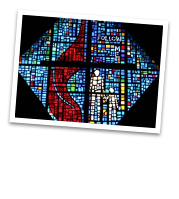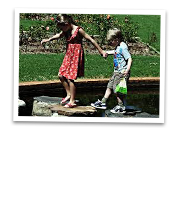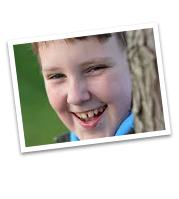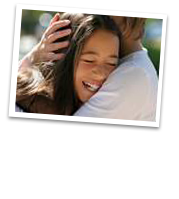Preschool
“Childhood still seems to me an inexhaustible source of revelations and hope.”
–Maria Montessori
The goal of the preschool environment is to be a catalyst to, and so cultivate, the child’s own natural desire to learn.
This objective is approached in various ways:
- By encouraging the child to experience choice, decision making empowers the child with intrinsic motivation and self-discipline.
- By guiding the child “to do it by myself,” the child’s basic need for independence is satiated. Independence is most clearly experienced by being allowed to make choices.
- By helping children believe that they are capable, competent and confident, positive attitudes toward learning are formed and last a lifetime. Making choices strengthens the child in his/her ability to think and act for him/herself.
The preschool class is indeed a child’s world, geared to the size, pace and interests of boys and girls between the ages of three and six. Sounds and movements abound in the class as children actively explore, manipulate and investigate in order to see, hear, feel and personally know his/her world. “Learning by doing” is the foundation of the Montessori approach. Thought and movement are considered integrated and interdependent. Montessori, like both Aristotle and Piaget, believed that the hand is the chief teacher of the child; the mind must be handmade.
Although individualized instruction is emphasized in the Montessori classroom, group collaboration and cooperative learning are also encouraged; children often engage in small group work.
Children have ample opportunity to practice burgeoning skills to the extent they feel is necessary. Nature instills in the preschool child a strong desire to repeat an activity over and over, and with each repetition, new observations are discerned, stronger physical and mental muscles develop. Concentration appears with repetition; with heightened concentration, learning takes place naturally and in due time.
It is a well-established fact that preschool children mature at very different rates and their periods of readiness for academic subjects vary a great deal. Montessori believed that learning experiences should not be tedious, but should occur naturally and joyfully at the proper moment for each individual child. The Montessori approach to education teaches children to think, to ask probing questions and seek creative answers.
The class can be thought of as a learning laboratory, organized into several curriculum areas, among them:
- Language Arts
- Mathematics
- Everyday Living skills
- Sensory Awareness exercises
- Cultural (geography, science, social studies, art, music, movement)
Simpler tasks are mastered before complex ones are introduced. Many materials involve the child in tasks that facilitate eye-hand coordination and small muscle control. Throughout the curriculum, one finds a web of indirect preparations that enhance the learning process.
The simple, Everyday Living exercises have complex aims: to develop order, concentration, coordination and independence. With carefully designed activities, children joyfully learn to care for themselves and for their class environment. The tasks of buttoning, transferring quantities, polishing, preparing – all subconsciously develop accurate eye-hand abilities, later needed for reading and other academic pursuits. Children soon develop courtesy, graciousness, poise and self-control, for vital interest in purposeful activity almost always breeds social maturity.
The Sensorial Awareness exercises, with their wide variety and many uses, provide purposeful movement and aid in muscular coordination. Children become aware of details by offering him/her opportunities to finely discriminate texture, colors, and dimension. One-to-one correspondence in matching/sorting, and grading/ discerning differences – these are necessary cognitive preparations. Intelligence is built up as the child learns to distinguish, to seriate, to categorize, and so relate new information to what s/he already knows. Children move through the structured materials independently, challenging themselves and gaining confidence. “Never let a child risk failure unless s/he has a reasonable chance of success,” Montessori cautions; carefully planned success motivates further learning.
The Language Arts area is designed to enrich a child’s vocabulary, conversation, and to establish a personal interest in reading and reading comprehension. As the child works with everyday living and sensorial foundation exercises, s/he develops many reading readiness skills. As the child shows an interest and a comprehension of activities preparatory to written language, the teacher provides the child with an opportunity to explore letter sounds and formation.
The Montessori unique approach to language development is a carefully respectful, individualized response to each child’s natural desire to absorb language and communicate.
The purpose of the Mathematics area is to follow the child’s basic need to seek order and logic in all things. Children count with enthusiasm and that enjoyment is channeled to a concrete understanding of math facts and concepts. Later, the school age child can make abstractions and truly understand the theoretic rules of math.
Our math materials are firmly based in process, not product. The child grasps (literally and figuratively) a personal mathematical understanding through extensive use of manipulative.
In the Art area, children are introduced to art history and art studio. As they daily explore the world of arts and crafts through the media of paint, clay, paste, and color, and through the use of simple desk tools, creative and individual expression are emphasized.
Music is daily, both spontaneous and planned, and includes an exploration of musical instruments, the music makers and music of many nations and styles.
Physical education is daily, as children are led in various activities that help develop gross motor skills such as running, walking, jumping, and walking with purpose and balance.













